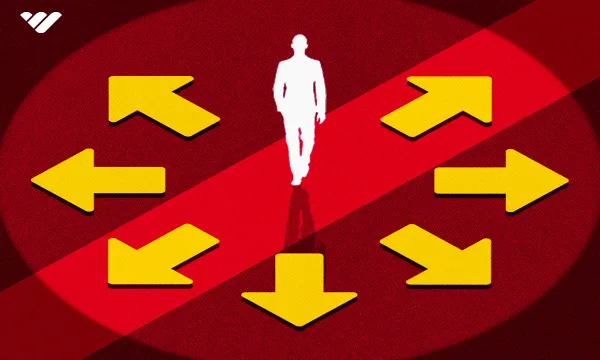Software as a Service, AKA SaaS, has changed the way that businesses operate. SaaS has transformed how businesses get access to, and make use of, software applications. Plus, as SaaS is affordable, scalable, and easy to use, it has experienced huge growth in the past few years.
As technology advances, so will SaaS. So, as a business owner, it is more important than ever to stay up to date with the latest SaaS developments. In this guide, we will unpack the future of SaaS, and how SaaS applications can streamline and enhance your business.
Artificial Intelligence in SaaS
The Artificial Intelligence scene has exploded in the past year alone. AI is now a part of all of our lives. Now, it is transforming the SaaS landscape too. SaaS applications powered by AI can process enormous datasets, extract insights, and streamline repetitive tasks. As such, the combination of SaaS and AI helps businesses to work more efficiently.
At the same time, Machine Learning algorithms help SaaS platforms to adapt to user behaviors and processes. Therefore, SaaS can offer personalized suggestions to your consumers. This gives you a competitive edge and boosts your business.
Examples of AI SaaS:
- HubSpot: Leverages AI to offer personalized recommendations to users.
- Slack: Streamlines workflows and increases productivity with Slackbot. Slackbot automates repetitive tasks, like sending reminders and scheduling meetings.
Vertical SaaS
Up until recently, generic SaaS has dominated the market. Now, vertical-specific SaaS brings an exciting development to the SaaS environment. Vertical-specific SaaS allows brings specialized features, functions, and workflows to businesses, creating industry-specific solutions.
Examples of Vertical SaaS:
- Buildium - a Vertical SaaS solution for the real estate industry. Buildium offers tools that help businesses to manage their rental properties, accounting, and maintenance.
- Kinnser Software - a Vertical SaaS solution for the healthcare industry. It offers a suite of tools that help businesses to manage their patient care, billing, and compliance.
Find out more about how Whop can help manage your SaaS subscriptions.
Cybersecurity in SaaS
While more businesses are adopting SaaS, many business owners are still concerned about data privacy and security. Data becoming breached is a major concern for any business owner. So, SaaS providers must address these concerns. They are doing this by creating more robust security measures. This includes encryption, multi-factor authentication, secure access controls, and more.
Aside from this, SaaS providers are also implementing stricter data protection policies so that they meet privacy regulations. Therefore, you can trust SaaS to keep your business safe, and data secure.
SaaS for Remote Work and Collaboration
Today's working world rarely features a completely in-office team. Since the pandemic, we have seen a huge shift towards remote working. However, in order for teams to work effectively, we must have efficient systems for collaboration. This is where SaaS comes in. SaaS platforms are improving their collaboration features, and creating seamless communication, collaboration, and file-sharing.
As more teams work remotely, SaaS needs to integrate with third-party integrations. As a result, SaaS providers are using open APIs, so that their systems can integrate with other software solutions. What does this mean? Well, you can now create customized workflows with multiple tools integrated!
Data Analytics and Business Intelligence
Finally, we have SaaS BI. SaaS BI is 'Business Intelligence Software as a Service'. SaaS BI is cloud-based, and so can be accessed by end-users through secure internet connections.
Some features of SaaS BI include:
- Cloud-Based Hosting: SaaS BI applications are hosted in the cloud across multiple servers, and accessible by web browsers. Therefore, you access data and analytics from any device with an internet connection.
- Subscription Pricing: Many SaaS BI applications use a subscription pricing model. Through a subscription model, you pay on a month-to-month basis. This saves money for small business owners, as you only pay for the SaaS application for as long as its useful to you.
- Financial Management: SaaS BI can help your financial management. Some aspects of SaaS BI include financial data analysis and regulatory compliance.
- Monitoring: SaaS BI can keep your business safe by monitoring for fraud detection and compliance.
As you can see, SaaS BI is useful for any business. It allows business owners to make informed decisions with data-driven insights, through scalable and cost-effective SaaS solutions.
Want to learn how you can become a SaaS provider? Read our bootstrapped SaaS guide here!
Pros and Cons of SaaS
As with every business decision, there are pros and cons to consider. Let’s take a look at what those are.
SaaS Pros:
- Accessibility: SaaS applications can be accessed via an internet browser, providing round-the-clock availability.
- Operational Management: Operational tasks are simplified with SaaS, as there is no need for installation, equipment updates, or traditional licensing management.
- Cost-Effectiveness: SaaS eliminates upfront hardware costs. Plus, PAYG subscription models offer flexibility.
- Scalability: It's easy to scale SaaS solutions up or down as your business changes.
- Data Storage: As data is stored in the cloud, there is less pressure of managing on-premise data storage systems.
- Analytics: SaaS often provides access to powerful data reporting, so that you can make informed decisions for your business.
- Increased Security: SaaS providers are committed to increasing their security to keep your data safe.
SaaS Cons:
- Loss of Control: You could lose some control over certain aspects of the software, depending on the vendor.
- Limited Customization: Some SaaS applications are limited in their customization options, which may not align with your specific business needs.
- Security Risks: Although SaaS is committed to security, as a business owner you must still exercise caution.
Preparing Your Business for the Future Using SaaS
Thanks to technological advancements and changing customer needs, SaaS continues to evolve. Here, we have outlined just a few of the trends changing the SaaS industry.
It’s up to you as a business owner to stay up to date with the latest SaaS advancements. SaaS trends will shape the future of how software is developed and utilized. One thing is for certain - SaaS leads to improved efficienty, innovation, and growth.
👉 Sign up to Whop today to start selling your SaaS products via Whop.
📊 Read next: SaaS Metrics That Matter





